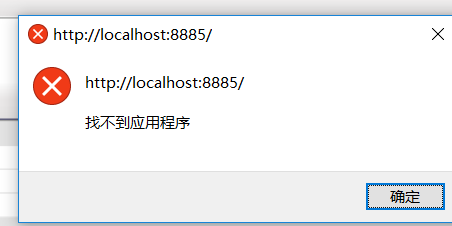可以将文章内容翻译成中文,广告屏蔽插件可能会导致该功能失效(如失效,请关闭广告屏蔽插件后再试):
问题:
This is probably easiest to explain through example. Suppose I have a DataFrame of user logins to a website, for instance:
scala> df.show(5)
+----------------+----------+
| user_name|login_date|
+----------------+----------+
|SirChillingtonIV|2012-01-04|
|Booooooo99900098|2012-01-04|
|Booooooo99900098|2012-01-06|
| OprahWinfreyJr|2012-01-10|
|SirChillingtonIV|2012-01-11|
+----------------+----------+
only showing top 5 rows
I would like to add to this a column indicating when they became an active user on the site. But there is one caveat: there is a time period during which a user is considered active, and after this period, if they log in again, their became_active date resets. Suppose this period is 5 days. Then the desired table derived from the above table would be something like this:
+----------------+----------+-------------+
| user_name|login_date|became_active|
+----------------+----------+-------------+
|SirChillingtonIV|2012-01-04| 2012-01-04|
|Booooooo99900098|2012-01-04| 2012-01-04|
|Booooooo99900098|2012-01-06| 2012-01-04|
| OprahWinfreyJr|2012-01-10| 2012-01-10|
|SirChillingtonIV|2012-01-11| 2012-01-11|
+----------------+----------+-------------+
So, in particular, SirChillingtonIV\'s became_active date was reset because their second login came after the active period expired, but Booooooo99900098\'s became_active date was not reset the second time he/she logged in, because it fell within the active period.
My initial thought was to use window functions with lag, and then using the lagged values to fill the became_active column; for instance, something starting roughly like:
import org.apache.spark.sql.expressions.Window
import org.apache.spark.sql.functions._
val window = Window.partitionBy(\"user_name\").orderBy(\"login_date\")
val df2 = df.withColumn(\"tmp\", lag(\"login_date\", 1).over(window))
Then, the rule to fill in the became_active date would be, if tmp is null (i.e., if it\'s the first ever login) or if login_date - tmp >= 5 then became_active = login_date; otherwise, go to the next most recent value in tmp and apply the same rule. This suggests a recursive approach, which I\'m having trouble imagining a way to implement.
My questions: Is this a viable approach, and if so, how can I \"go back\" and look at earlier values of tmp until I find one where I stop? I can\'t, to my knowledge, iterate through values of a Spark SQL Column. Is there another way to achieve this result?
回答1:
Here is the trick. Import a bunch of functions:
import org.apache.spark.sql.expressions.Window
import org.apache.spark.sql.functions.{coalesce, datediff, lag, lit, min, sum}
Define windows:
val userWindow = Window.partitionBy(\"user_name\").orderBy(\"login_date\")
val userSessionWindow = Window.partitionBy(\"user_name\", \"session\")
Find the points where new sessions starts:
val newSession = (coalesce(
datediff($\"login_date\", lag($\"login_date\", 1).over(userWindow)),
lit(0)
) > 5).cast(\"bigint\")
val sessionized = df.withColumn(\"session\", sum(newSession).over(userWindow))
Find the earliest date per session:
val result = sessionized
.withColumn(\"became_active\", min($\"login_date\").over(userSessionWindow))
.drop(\"session\")
With dataset defined as:
val df = Seq(
(\"SirChillingtonIV\", \"2012-01-04\"), (\"Booooooo99900098\", \"2012-01-04\"),
(\"Booooooo99900098\", \"2012-01-06\"), (\"OprahWinfreyJr\", \"2012-01-10\"),
(\"SirChillingtonIV\", \"2012-01-11\"), (\"SirChillingtonIV\", \"2012-01-14\"),
(\"SirChillingtonIV\", \"2012-08-11\")
).toDF(\"user_name\", \"login_date\")
The result is:
+----------------+----------+-------------+
| user_name|login_date|became_active|
+----------------+----------+-------------+
| OprahWinfreyJr|2012-01-10| 2012-01-10|
|SirChillingtonIV|2012-01-04| 2012-01-04| <- The first session for user
|SirChillingtonIV|2012-01-11| 2012-01-11| <- The second session for user
|SirChillingtonIV|2012-01-14| 2012-01-11|
|SirChillingtonIV|2012-08-11| 2012-08-11| <- The third session for user
|Booooooo99900098|2012-01-04| 2012-01-04|
|Booooooo99900098|2012-01-06| 2012-01-04|
+----------------+----------+-------------+
回答2:
Refactoring the above answer to work with Pyspark
In Pyspark you can do like below.
create data frame
df = sqlContext.createDataFrame(
[
(\"SirChillingtonIV\", \"2012-01-04\"),
(\"Booooooo99900098\", \"2012-01-04\"),
(\"Booooooo99900098\", \"2012-01-06\"),
(\"OprahWinfreyJr\", \"2012-01-10\"),
(\"SirChillingtonIV\", \"2012-01-11\"),
(\"SirChillingtonIV\", \"2012-01-14\"),
(\"SirChillingtonIV\", \"2012-08-11\")
],
(\"user_name\", \"login_date\"))
The above code creates a data frame like below
+----------------+----------+
| user_name|login_date|
+----------------+----------+
|SirChillingtonIV|2012-01-04|
|Booooooo99900098|2012-01-04|
|Booooooo99900098|2012-01-06|
| OprahWinfreyJr|2012-01-10|
|SirChillingtonIV|2012-01-11|
|SirChillingtonIV|2012-01-14|
|SirChillingtonIV|2012-08-11|
+----------------+----------+
Now we want to first find out the difference between login_date is more than 5 days.
For this do like below.
Necessary imports
from pyspark.sql import functions as f
from pyspark.sql import Window
# defining window partitions
login_window = Window.partitionBy(\"user_name\").orderBy(\"login_date\")
session_window = Window.partitionBy(\"user_name\", \"session\")
session_df = df.withColumn(\"session\", f.sum((f.coalesce(f.datediff(\"login_date\", f.lag(\"login_date\", 1).over(login_window)), f.lit(0)) > 5).cast(\"int\")).over(login_window))
When we run the above line of code if the date_diff is NULL then the coalesce function will replace NULL to 0.
+----------------+----------+-------+
| user_name|login_date|session|
+----------------+----------+-------+
| OprahWinfreyJr|2012-01-10| 0|
|SirChillingtonIV|2012-01-04| 0|
|SirChillingtonIV|2012-01-11| 1|
|SirChillingtonIV|2012-01-14| 1|
|SirChillingtonIV|2012-08-11| 2|
|Booooooo99900098|2012-01-04| 0|
|Booooooo99900098|2012-01-06| 0|
+----------------+----------+-------+
# add became_active column by finding the `min login_date` for each window partitionBy `user_name` and `session` created in above step
final_df = session_df.withColumn(\"became_active\", f.min(\"login_date\").over(session_window)).drop(\"session\")
+----------------+----------+-------------+
| user_name|login_date|became_active|
+----------------+----------+-------------+
| OprahWinfreyJr|2012-01-10| 2012-01-10|
|SirChillingtonIV|2012-01-04| 2012-01-04|
|SirChillingtonIV|2012-01-11| 2012-01-11|
|SirChillingtonIV|2012-01-14| 2012-01-11|
|SirChillingtonIV|2012-08-11| 2012-08-11|
|Booooooo99900098|2012-01-04| 2012-01-04|
|Booooooo99900098|2012-01-06| 2012-01-04|
+----------------+----------+-------------+


